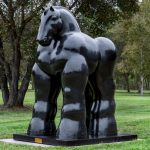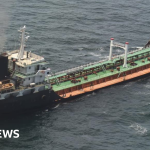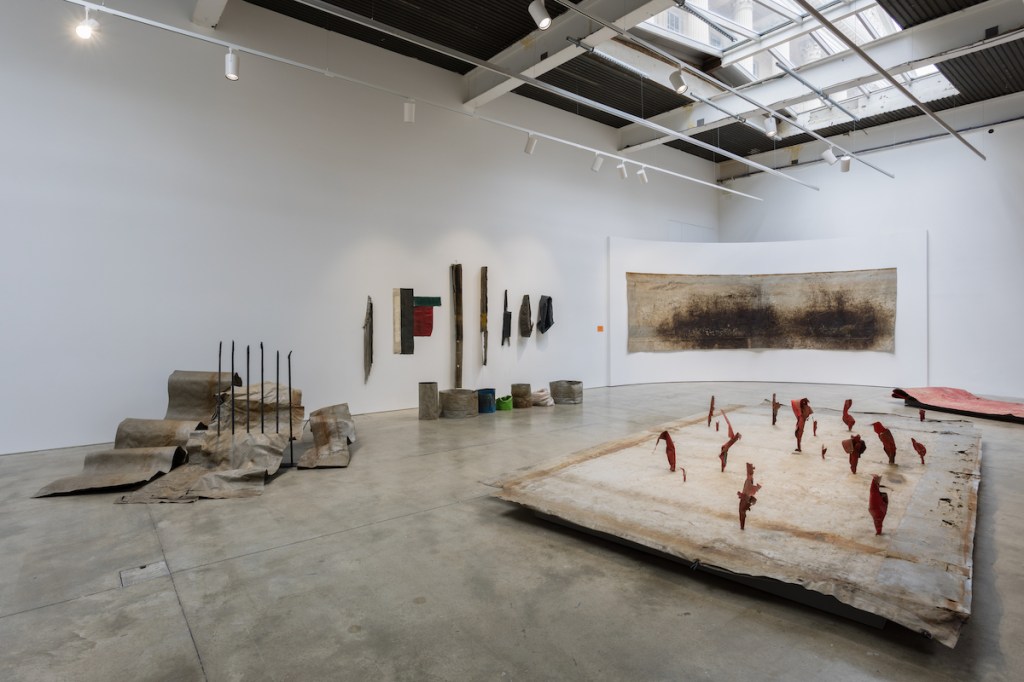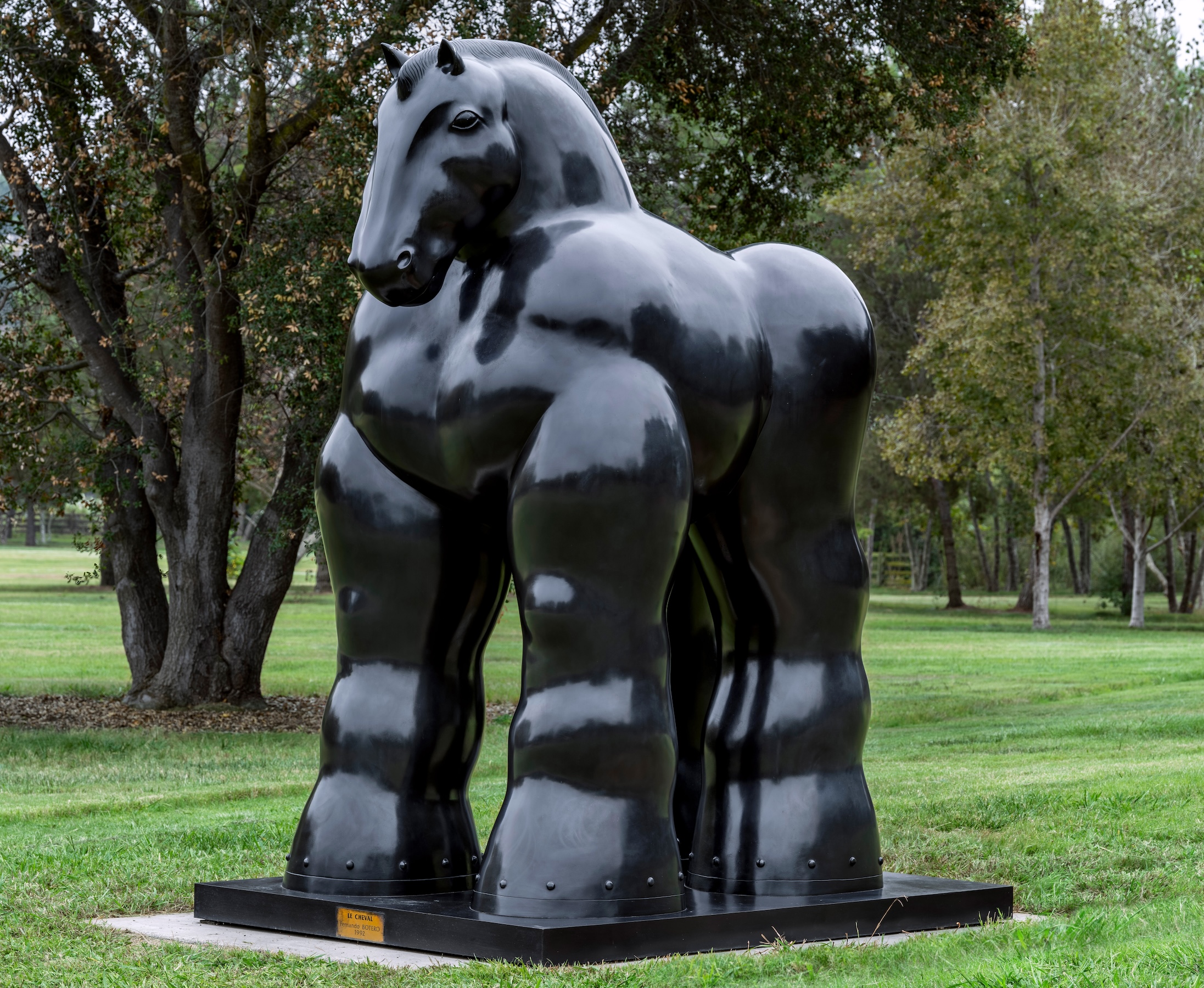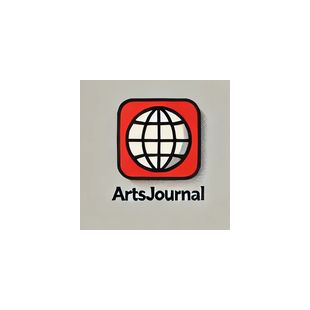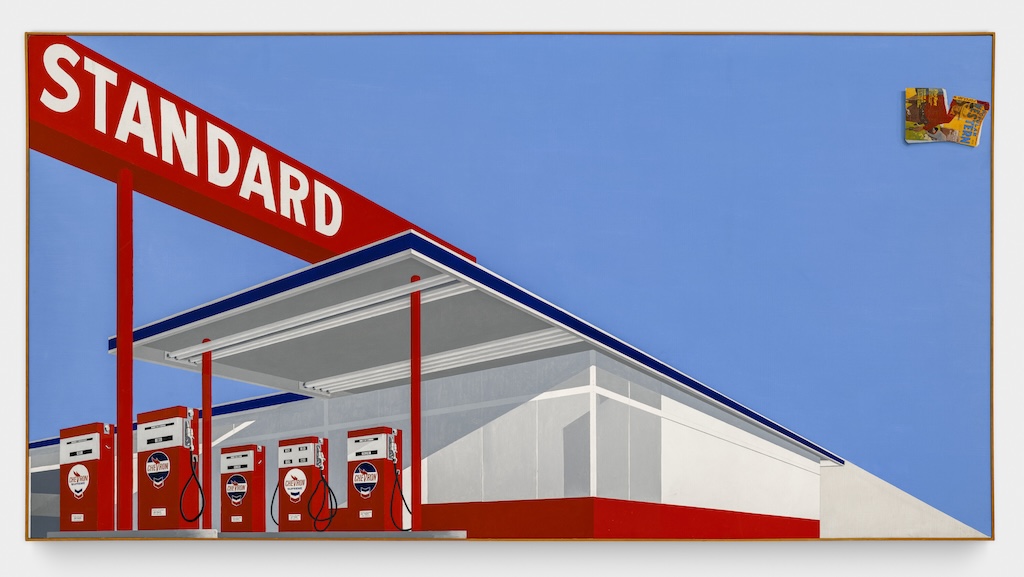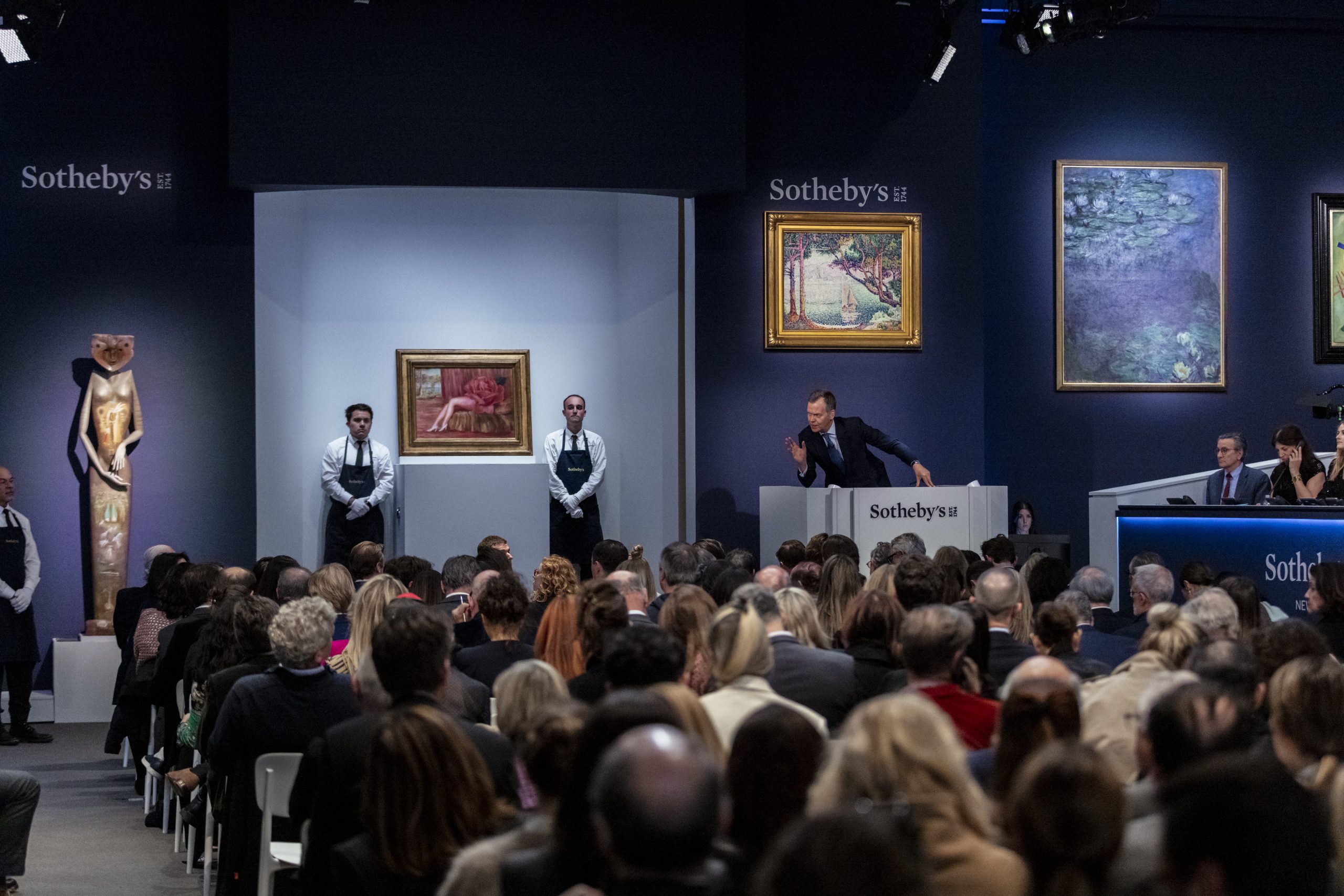If you enter the lower galleries of London’s Institute of Contemporary Arts right now, you’ll encounter a postcard-like image described by the museum as “an intervention.” The image’s front side shows “this beautiful portrait of probably a queer person,” the other side, “a very direct statement on the genocide in Gaza,” according to its maker, artist Rheim Alkadhi, who first visited Palestine around three decades ago as a teenager. There, she said in an interview, she “got a picture early on of the discrepancy between the news we are given and what is actually happening.”
That card sets the stage for “Templates for Liberation,” Alkadhi’s first show in the UK. The statement on the card is the Berlin-based artist’s way of “seeking this very direct, relevant, irresistible confrontation in art,” she said, speaking to ARTnews following the opening of the show. She added that “the text instructs the viewer to leave the exhibition and to resist among co-equals.”
The Iraqi American artist’s show centers on the artist’s thinking about the possibilities of art as an agent for change and as a means for proposing solutions to the lasting effects of issues like colonialism and war, not just in her family’s homeland, but also in other countries including Palestine, Democratic Republic of Congo, and Sudan. Her goal, she said, is to ultimately allow viewers to find “ways of arriving at liberation outside the gallery.”
Alkadhi’s installations are often composed of sculptures, texts, and images, all of which stem from her field research. She has conducted that research in countries ranging from Palestine to Lebanon, from Iraq to Jordan, from Morocco to sites along Europe’s borders. Her work has begun appearing across the globe, in biennials staged in Shanghai, Sharjah, and elsewhere.
The 2020 Guggenheim Fellow’s body of work is on view in the London show across two gallery spaces. The main gallery space features sculptural installations created out of tarpaulin, a material used to cover goods transported by vehicles on long distance travels. Her first contact with tarpaulin was when she saw used fragments of the material while collecting objects in Jordan—the country with the second-largest number of refugees worldwide, according to the UN—in the early 2010s. The fragments looked to her like “multi-colored plasticized fields,” she recalled. “This fascinated me, ground that is able to be folded, rolled, transported. It also spoke to migration, taking the concept of land with you.”
Alkadhi lived in Jordan around the time of the Arab Spring, a series of protests that led to some Middle Eastern and North African presidents leaving their posts. At the time, she was also invited to do a residency in Palestine, where she lived with three sisters and their mother in the West Bank. She said this “was a really important moment” for her.
Ironically, tarpaulins cross borders with little difficulty. At the same time, humans, often escaping wars or destruction of their homeland largely caused by Western governments and corporations, are criminalized trying to cross borders around the world.
Alkadhi said that, some four years ago, she witnessed this very phenomenon during months of research on the Greek Island of Lesbos at the European border with Turkey. To get there, many people crossing from parts of Africa, the Middle East, and Asia face a dangerous boat ride. Upon arrival, these migrants could face criminal charges.
“It’s all part of the capitalist framework of the world we live in,” Alkadhi said. “What are being transported or distributed are raw materials or products derived from extraction industries depleting the soil mostly of the Global South.”
She added: “For me, that’s what the tarp represents: a bitter comparison between cargo and migrant bodies.”
The second gallery space has been turned by Alkadhi into a reading room. Titled The Land and the People, this piece features digitally rendered portraits, books, and text commentary by Alkadhi that highlight the impact of colonial borders drawn by Britain and France between the 1910s and ’20s. These borders have continued to affect modern-day Iraq, where the loss of land for farming to international oil companies, the destruction of the environment, and the realities of war remain constant.
In that room, there are volumes of The Anthropology of Iraq, published initially in the 1930s and based on studies started about a decade earlier in Iraq by anthropologist Henry Field, who worked on commission for the Field Museum and, later, the British government. These studies saw locals identified only by a number, photographed in mugshot-style, and then divided into different groups. The data that was collected was used by then United States President Franklin D. Roosevelt for his previously secret “M” project to scout “underpopulated” regions for the resettlement of millions expected to be displaced by World War II.
Before entering the second space from the first, a visitor is “faced with a border,” as Alkadhi put it—a dirty, stained, straightened-out, and slightly crushed tarpaulin sculpture titled Disappeared Border Segment: Toward the Inalienable Right of the Dispossessed to Cross From Any Direction.
“It’s proposing legal right of passage in any direction but only for the dispossessed—not the legal right of passage for big corporations, rich people, or people vacationing,” the artist explained.
Topics such as these may seem contemporary, but they have been subject of Alkadhi’s work for more than a decade. In 2012, ICA London curator Andrea Nitsche-Krupp came across Alkadhi’s work at Documenta 13, but it was not until August of last year that the two began discussions for the current show. Then the October 7 Hamas attack on Israel happened followed by Israeli military action in Gaza, where more than 40,000 people have been killed since then, according to the Gaza Health Ministry. “Everything became much more urgent,” Nitsche-Krupp said, adding that Alkadhi “had been thinking about a narrative of liberation. Templates for liberation had been something on her mind before this point, but once things escalated to such an insane degree, [it] added a kind of urgency around [adding] Palestine to the project in thinking about templates for liberation.”
Alkadhi was born to an Iraqi father and an American mother in Buffalo, New York, in 1973. Her family then moved to Baghdad, and remained there until 1980, when the artist and her parents left Iraq for the United States. This was just before the start of the Iran-Iraq war, and Alkadhi recalled “relative ease” of the move, something she said was possible because of her mother’s nationality.
“I remember distinctly the tension of those months and leaving belongings in a room of a house that I was sure I would see again,” she said. “It was my home, after all, but I never saw any of it again.”
The artist was introduced to field research through her mother, the anthropologist Ann Bragdon, whose profession involved work in Iraq. Tagging along with her mom, a young Alkadhi was exposed to a world beyond the one where she lived in. She also met people from all walks of life. The artist said that today, she thinks of art as a voice, one that she uses to advocate for those who can’t do so for themselves. She attributed that line of thought to her mother.
All this is evident in For the Oppressed to Narrate the Crimes of Their Oppressors, a work in the ICA show. The work is “simply a tarp spattered and stained with literal extracted material,” Alkhadi said. That material is tar, and the work’s plain materials speak to entire swaths of the world roiled by conflict. “It looks violent, like a war panorama. It is also very painterly and beautiful. Basically, the conditions of our world painted it.”
As part of the exhibition, an artist book is published in collaboration with the artist and Joe Shakespeare, who heads the ICA Bookshop. In it, Alkadhi wrote prose that connects the exhibition to the present. There are texts by Francoise Vergès, Rene Gabri, Ayreen Anastas, and Kali Rubaii, a contemporary Iraqi anthropologist on the ecological devastation of war. The book also includes documentary photos taken by Alkadhi’s mother in Iraq in the 1970s.
“I think about the reading room a lot. And I think about elements of books and the impulse of artists to dismantle the dominant narrative,” Alkadhi said. “I think of the tarpaulin as a paper-thin material, a page from a book of concepts of what materials can do. Such material reinforces what I believe is the artist’s role, which is to make revolution irresistible.”



